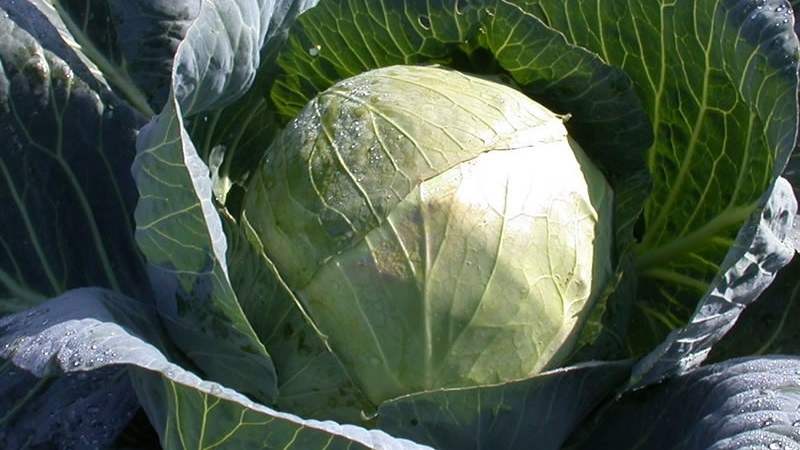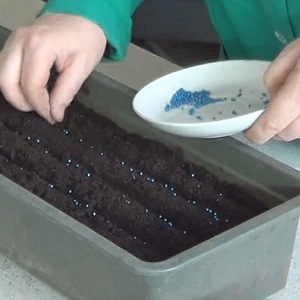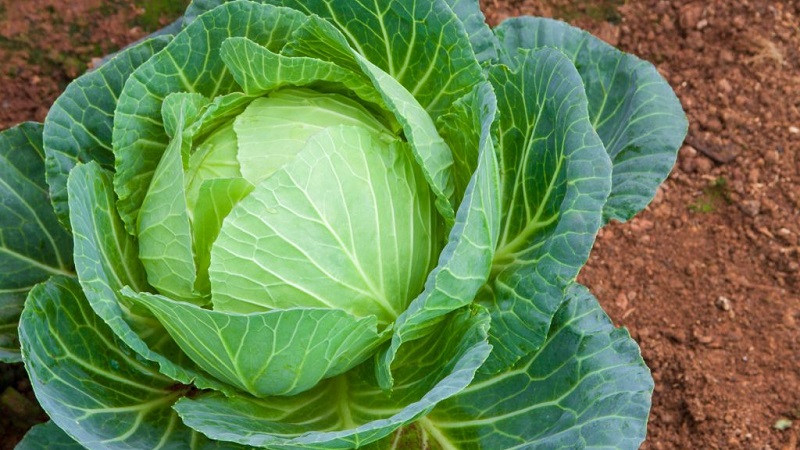High-yielding variety of cabbage "Belarusian": description and characteristics
Belorusskaya is a variety of white cabbage that was bred back in the days of the USSR and has not yet lost its popularity among gardeners. Despite its weak immunity, it has many positive characteristics, including a pleasant taste, good keeping quality and high commercial qualities. In this article we will give a description of the Belarusian cabbage variety and talk about the agrotechnical requirements.
The content of the article
Description of the variety
The variety appeared thanks to the work of Soviet breeders.... It is characterized by dense, flattened heads of cabbage, suitable for fresh consumption, processing and storage.

Origin and development
Belarusian cabbage was bred by Soviet breeders of the All-Russian Research Institute of Breeding and Seed Production on the basis of one of the Belarusian varieties by the method of individual and family selection.
Chemical composition and useful properties
100 g of vegetable contains:
- sugar - 4.4-6.7%;
- ascorbic acid - 24-39 mg;
- dry matter - up to 8%;
- vitamin B1 - 0.03 mg;
- B2 - 0.04 mg;
- B5 - 0.2 mg;
- B6 - 0.1 mg;
- E - 0.1 mg;
- calcium - 48 mg;
- phosphorus - 31 mg;
- chlorine - 37 mg.
Cabbage helps to normalize metabolic processes, has anti-inflammatory and analgesic properties, is useful for atherosclerosis, gout, constipation, heart and kidney diseases.
Application features
Heads of cabbage of this variety are suitable for fresh consumption, fermentation, pickles, extinguishing, preparation of salads and first courses.
Ripening period and yield
This is a late-ripening variety... The harvest of Belorusskaya 455 is ready for harvesting in 120-130 days after germination, Belorusskaya 85 - after 140-150 days.
Yield - 474-785 c / ha.
Disease, pest and cold resistance
The variety is prone to defeat keel, vascular bacteriosis, cabbage flies, cabbage butterflies, caterpillars, bears, cruciferous bugs, wavy flea beetles, aphids, whiteflies, stem lurks and slugs.
It is a frost-resistant variety. - seeds germinate at + 5 ° C, adult plants tolerate frosts down to -4 ° C.
Description of the appearance of leaves and head of cabbage
The variety is characterized by a weak root system located 25-30 cm from the soil surface... The plant forms dense heads of cabbage with a flattened shape weighing 2-3 kg (Belorusskaya 85) and 4-4.5 kg (Belorusskaya 455) with an outer stump no more than 10 cm long.
Semi-spreading leaf rosette, reaches 70-90 cm in diameter... The integumentary leaves are dense, large, dark green, have a rounded flat shape, medium-wavy edges, thin veins and a smooth surface covered with a waxy coating.
Leaves forming the head of cabbage are thin, light green in color, bleached by the time of technical maturity.
Crispy, juicy cabbage and slightly sweetish.

For which regions is it suitable
Belarusian cabbage allowed for cultivation in Northern, North-Western, Central, Volgo-Vyatka, Central Black Earth, Middle Volga, Ural, West Siberian, East Siberian and Far Eastern regions.
Advantages and disadvantages of the Belorusskaya variety
The advantages of the variety:
- lack of tendency to cracking;
- transportability;
- pleasant sweetish taste;
- universality of application;
- abundant productivity;
- frost resistance;
- the ability to collect your own seeds.
Disadvantages of the Belarusian:
- tendency to damage by diseases and pests;
- exactingness to humidity, especially at the beginning of the growing season;
- poor transplant tolerance.
Difference from other varieties and hybrids
Comparison of Belorusskaya with other late-ripening varieties cabbage is shown in the table:
| Variety | Head shape | Head of cabbage weight, kg | Productivity, c / ha |
| Belarusian | Flattened | 2-3 and 4-4.5 | 474-785 |
| Artemivka | Rounded flat | 2,4-3,2 | 387-559 |
| Turquoise plus | Rounded | 1,7-2,5 | 432-677 |
| Voikor | Rounded flat | 1,7-2,3 | 230-338 |
Features of planting and growing
Belarusian cabbage is grown in open and closed groundusing seedling or reckless ways.
Preparation for planting seeds and seedlings
Seed sowing dates vary from late March to early May, depending on the climate of the region: cabbage is sown earlier in warm areas, later in cold areas.
Pre-landing preparation:
 sowing containers are treated with boiling water with the addition of potassium permanganate a week before planting;
sowing containers are treated with boiling water with the addition of potassium permanganate a week before planting;- a soil mixture with neutral acidity is prepared by mixing peat, sod soil and sand in a ratio of 3: 1: 0.5, the day before sowing, it is spilled with a solution of potassium permanganate or fungicides ("Gamair");
- harden the seeds by lowering them for half an hour in hot (+ 50 ° C), and then for 2 minutes. into cold water;
- the planting material is etched by soaking for 30 minutes. in a solution of potassium permanganate or for 8 hours in "Fitosporin".
The substrate is poured into the prepared containers and seeds are sown every 3 cm, deepening them by 1 cm... The grains are sprinkled with soil mixture and watered, the containers are covered with polyethylene and placed in a room with a temperature of + 18 ... + 20 ° C.
After germination they are provided with 12-hour daylight hours and an air temperature of + 15 ° C during the day and + 10 ° C at night.
When the seedlings form 2 true leaves, carry out picking of seedlings in individual containers with a diameter of at least 6 cm.
Seedlings are watered moderately, avoiding drying out or waterlogging of the soil, and 2 weeks before transplanting to the beds, they begin to harden, taking it out to fresh air and gradually increasing the time of its stay there from 15 minutes. up to a day.
Seedless landing
With seedless cultivation, seeds in May are sown directly into open ground according to the scheme 60 × 60 or 70 × 70 cm, deepening by 1-1.5 cm.
Heads of cabbage quickly set at a temperature of + 20 ... + 25 ° C... If the air warms up to + 30 ° C or more, the formation of heads of cabbage slows down.
Ground requirements
The Belarusian is planted in a well-lit, sunny and wind-protected place.... The variety prefers light, loose, fertile soil with neutral acidity, good aeration and moisture permeability.
The soil is prepared in autumn: cover with humus or compost mixed with ash at the rate of 1 bucket of mixture per 1 sq. m, and dug to a depth of about 22 cm.
Predecessors
The grade is better plant after onions, tomatoes, potatoes, peppers, legumes and pumpkin crops. The worst predecessors are rutabagas, turnips, turnips and other cabbage varieties.

Timing, scheme and landing rules
Seedlings are transplanted into open ground in the first half of Junewhen the seedlings are 40-50 days old, they will have 6-8 leaves and a strong root system. The soil should be warmed up to + 4 ... + 10 ° C.
Landing rules:
- The beds are formed in the direction from north to south, maintaining a distance between rows of 60-70 cm.
- Every 60-70 cm, planting holes with a depth of 15-20 cm are made in them.
- A handful of humus and wood ash is poured at the bottom of each, 2-3 liters of water are poured.
- The seedlings are removed from the containers and placed in the prepared grooves, carefully straightening the roots.
- Sprinkle the plants with soil over the lower leaves, compact and water the ground.
Seedlings are transplanted in the evening or in cloudy, rainy weather.
Growing features
Caring for the Belorusskaya variety assumes the fulfillment of standard agrotechnical requirements: watering, weeding and loosening, fertilizing and protecting against diseases and pests.
Watering mode
During the first 14 days after transplanting, the seedlings are watered at least once every 2 days. at the rate of 2 liters of water per plant. In the future, they are guided by climatic conditions and soil composition: chernozem and loam are watered less often, sandy loam more often.
Reference. The soil must be moistened at least 20 cm deep.
Watering is stopped 2 weeks before harvestingso that the heads of cabbage do not crack.

Loosening and hilling
The earth is loosened after each watering or rain to a depth of 7 cm. This improves the access of moisture, air and nutrients to the roots. At the same time they get rid of weeds.
Spud cabbage twice a season... For the first time - 3 weeks after transplanting seedlings into the ground.
Top dressing
For the first time, fertilizers are applied 2 weeks after transplanting seedlings, consuming 0.5 liters of a solution of humus or chicken droppings for each plant.
In the future, the cabbage is fed another 3-4 times with an interval of 15-20 days, pouring 1 liter of mullein or chicken droppings under the plants.
Reference. The variety responds well to foliar feeding with iodine or ammonia.
Measures to increase the yield
The quantity and quality of the crop depends on planting care... Many large and beautiful heads of cabbage can be obtained with proper watering, regular fertilization and protection of vegetables from diseases and pests.
Disease and pest control
Diseases and pests dangerous for this variety are presented in the table:
| Disease / pest | Signs | How to get rid of |
| Keela | Plants lose their turgor, the leaves turn yellow and wither, the heads of cabbage roll to one side, the aboveground part dies off. | The disease is not cured, so the affected specimens are uprooted and burned, and the soil is abundantly watered with copper sulfate. |
| Vascular bacteriosis | The seedlings develop slowly, the roots of the seedlings are bent. They quickly die after the cotyledons are clarified, the veins on the leaves turn black. If the heads of cabbage are tied, they grow small and loose. | The infected plants are dug up and destroyed, the above-ground part of healthy ones is sprayed with the Planriz solution. |
| Cabbage flies | The leaves are covered with a sticky bloom, holes or yellow dots appear on them. |
Plants are sprayed with a soap-ash solution, decoctions based on garlic, wormwood, onion husks, vinegar, ammonia. If folk remedies do not help, use insecticidal preparations, for example, "Aktara" or "Aktofit". |
| Caterpillars | ||
| Cabbage butterflies | ||
| Medvedki | ||
| Cruciferous bugs | ||
| Wavy fleas | ||
| Aphid | ||
| Whiteflies | ||
| Stem lurkers | ||
| Slugs |
Harvesting and storage
Harvested in late September - early October, choosing for this a sunny day so that the heads of cabbage are dry.

Cabbage heads are cut with a knife, leaving stalks about 3 cm long, for which they are subsequently suspended during storage.
A well-ventilated room with a temperature of 0… + 5 ° C and an air humidity within 95% is chosen as a storage facility. In such conditions, heads of cabbage are stored until January, and at a temperature of + 5 ... + 7 ° C - a month.
Growing difficulties
Problems that may arise during the cultivation of the Belarusian:
- the stems are stretched, the quality of the heads of cabbage decreases - the cabbage grows in the shade, it lacks light;
- head cracking is the result of watering 2 weeks before harvest.
Tips and reviews of experienced gardeners about the variety
Gardeners recommend:
- change the planting site of cabbage annually to reduce the risk of keel damage to plants;
- sow seeds immediately in individual containers, since seedlings of this variety do not tolerate picking well.
Farmers speak positively about the variety.
Maria, Kazan: “I have been growing this cabbage for several decades, I have tried other varieties, but I still return to Belorusskaya. Cabbage is very tasty, good and long-term storage, heads of cabbage are large and dense. True, you have to carefully handle diseases and pests, because the variety has no immunity, but I’m already used to it and I don’t think it is something difficult. ”.
Natalia, Voronezh region: “We have a small plot, but we always grow cabbage. Let a little, but enough for us. We choose Belarusian, because it is very tasty and ideal for fermentation ".
Conclusion
Belorusskaya is a long-known variety of cabbage, among the main advantages of which are the relative resistance to cracking, good keeping quality and transportability, excellent taste and high yield. Among the disadvantages is the lack of immunity to diseases and pests and the exactingness of watering.